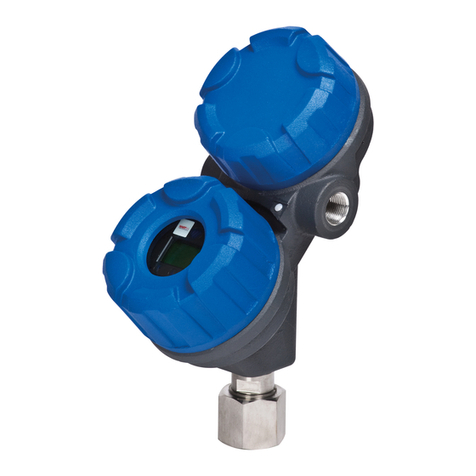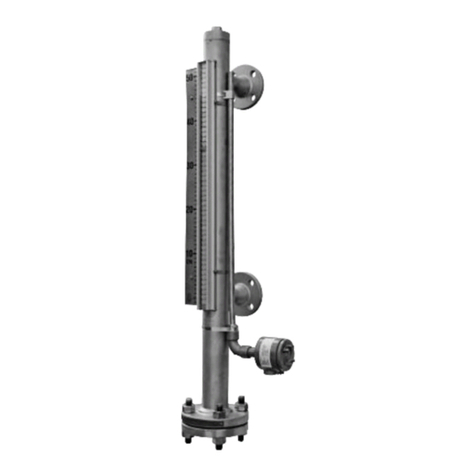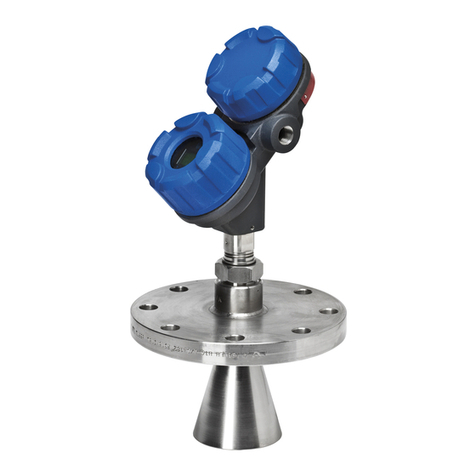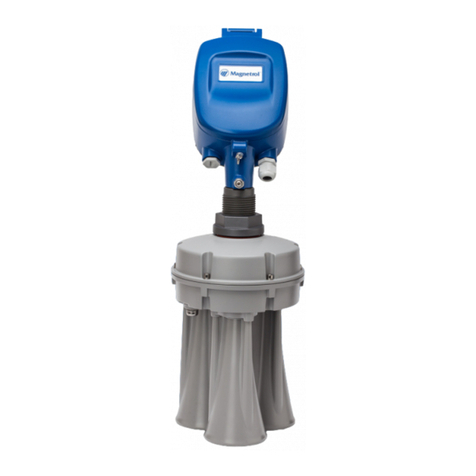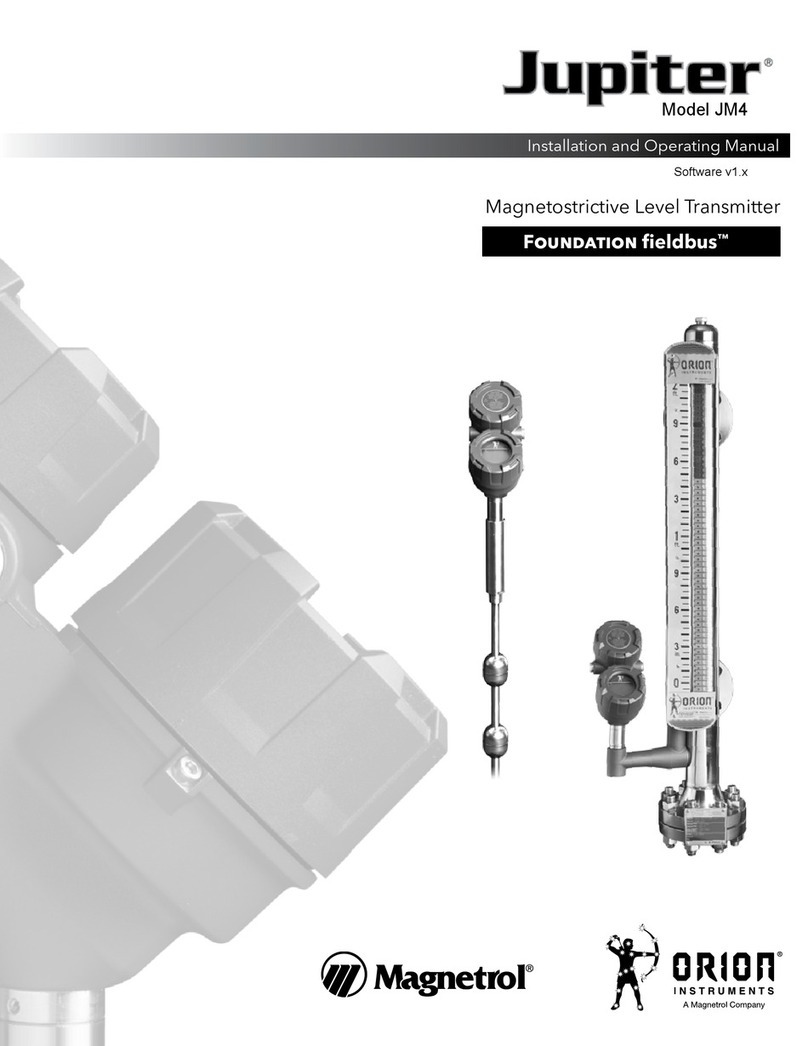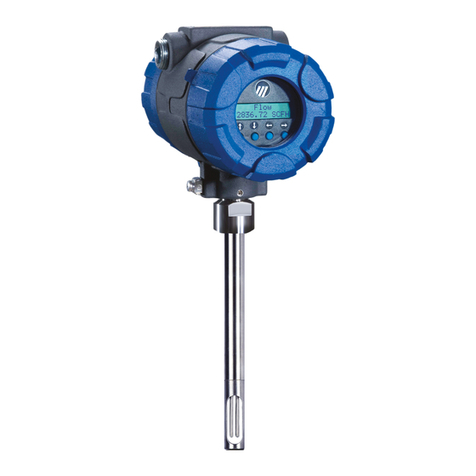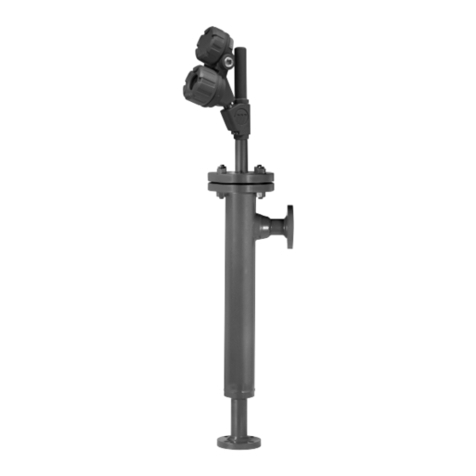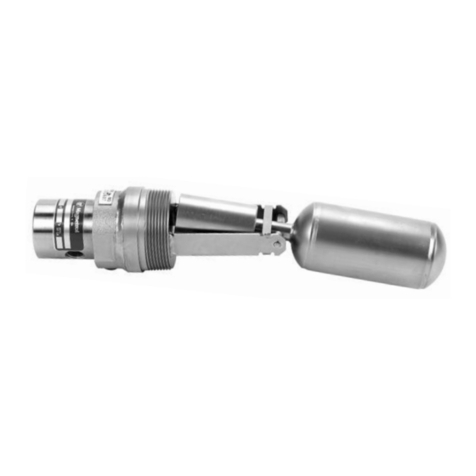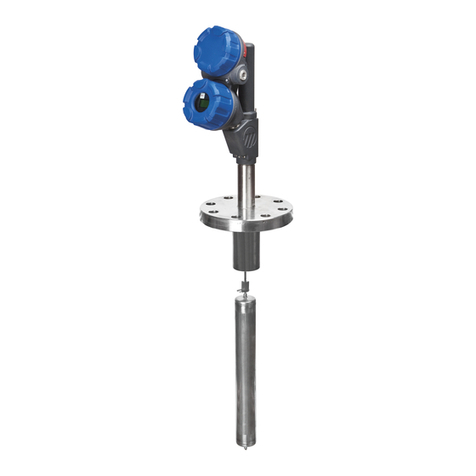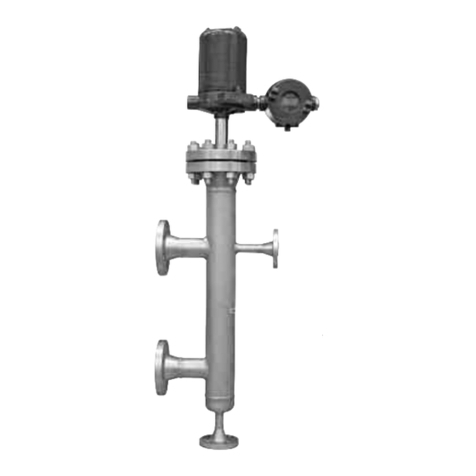7
MEASUREMENT RANGE CALCULATIONS
Operating Parameter Condition Performance Application
Multiplier
SURFACE AGITATION: Surface agitation or waves can degrade the
Smooth, glass-like surface 1.0
performance. Moderate agitation results in only slight degradation Slight agitation, choppiness 0.9
of performance. The worst case is when the surface is a good Heavy agitation 0.8
reflector, but in the wrong direction. (See also transducer alignment.) Slight vortex (6°) 0.7
VAPORS AND STEAM: Vapors in the air space, above the process,
become apparent, and cause problems when the liquid process No condensation 1.0
temperature is well above the temperature of the airspace. The
greater the difference, the more expected vapor problems. The
problems result from condensation or layering in the sound path,
both of which attenuate the sound signal, degrading performance. Little condensation 0.9
To avoid these problems, ensure that the vessel is insulated so that
vapors are less likely to condense. If a vent is used, be sure that the Much condensation/ 0.8
vent, which is where condensation will form, is well away from the foggy appearance
transducer.
BEAM SPREAD INTERFERENCE: It is strongly recommended that No interference 1.0
nothing be allowed within the transducer’s beam, except the liquid
which is being monitored. Often, the signal from the liquid will be Agitator at speed less than 60 RPM 1.0
strong, compared to the signal from other sources, such as ladder
rungs, filling process material, support struts, etc. For that reason, Agitator at speed greater than 60 RPM Consult
some applications may provide satisfactory results, even with Factory
interference. Interference from agitator blades is only an intermittent
interference that usually has little effect on performance. Interference outside 4°, far from 0.8
It is recommended there be no interference within the 6° half angle of transducer (in bottom third of range)
the transducer beam. If interference is unavoidable, make the inter-
ference as far as possible from the transducer so that the real signal Interference outside 4°, near to 0.5
at the longest distance is stronger than the interference signal. transducer (in top third of range)
TRANSDUCER ALIGNMENT: Optimum performance is obtained when Beam perpendicular to liquid surface 1.0
the transducer is perfectly aligned. If the process is not perpendicular
to the sound beam, the sound will not reflect properly back to the
transducer. The effect is significant. Beam 4° off from perpendicular 0.5
FOAM: Even small thicknesses of foam can attenuate the ultra- No foam 1.0
sound and render the system inoperative. If possible, moving the Light froth, less than 0.25" thick 0.8
transducer to an area in the tank where there is less foam will improve
the performance. Thick, heavy-density foams can sometimes produce Light foam, less than 0.5" thick 0.5
a reflection from the top of the foam. The multipliers shown at right Light foam, more than 1" thick 0.1
are general guidelines. For further assistance consult the factory.
DUST: Dust attenuates the sound and results in poor performance.
No dust 1.0
Even barely perceptible haze in the air can cause significant Haze, barely perceptible 0.7
attenuation. Slight dust 0.4
Heavy dust 0.1
AIR MOVEMENT: The movement of air, as possible in an open top No air movement 1.0
vessel, can create a layer from which the sound will reflect. This will Open vessel, but transducer below rim 0.8
be most noticeable in applications where vapors or steam tend to
form. Open air movement in sound path 0.7
AMBIENT TEMPERATURE: The ambient temperature can have a -20° to +140° F (-29° to +50° C) 1.0
significant effect on the sound and on the transducer’s capability to -40° to -20° F (-40° to -29° C) 0.9
transmit and receive sound. The most noticeable effect on the
transducer is at the temperature extremes. +140° to +160° F (+50 to +70° C) 0.9
PRESSURE: Sound requires air molecules to be able to travel. Sound -10 to +50 PSIG (0.689 to +3.45 bar) 1.0
will not travel in a vacuum. Likewise, higher pressures will allow the
sound to continue without decay, which can cause problems with Pressures outside above rating Consult
multiple echoes. Factory
Multiply all values together in the application column
Multiply by maximum potential range (35 feet for Model 344 or 25 feet for Model 345 ) X
Maximum allowable measurement range for this application =
